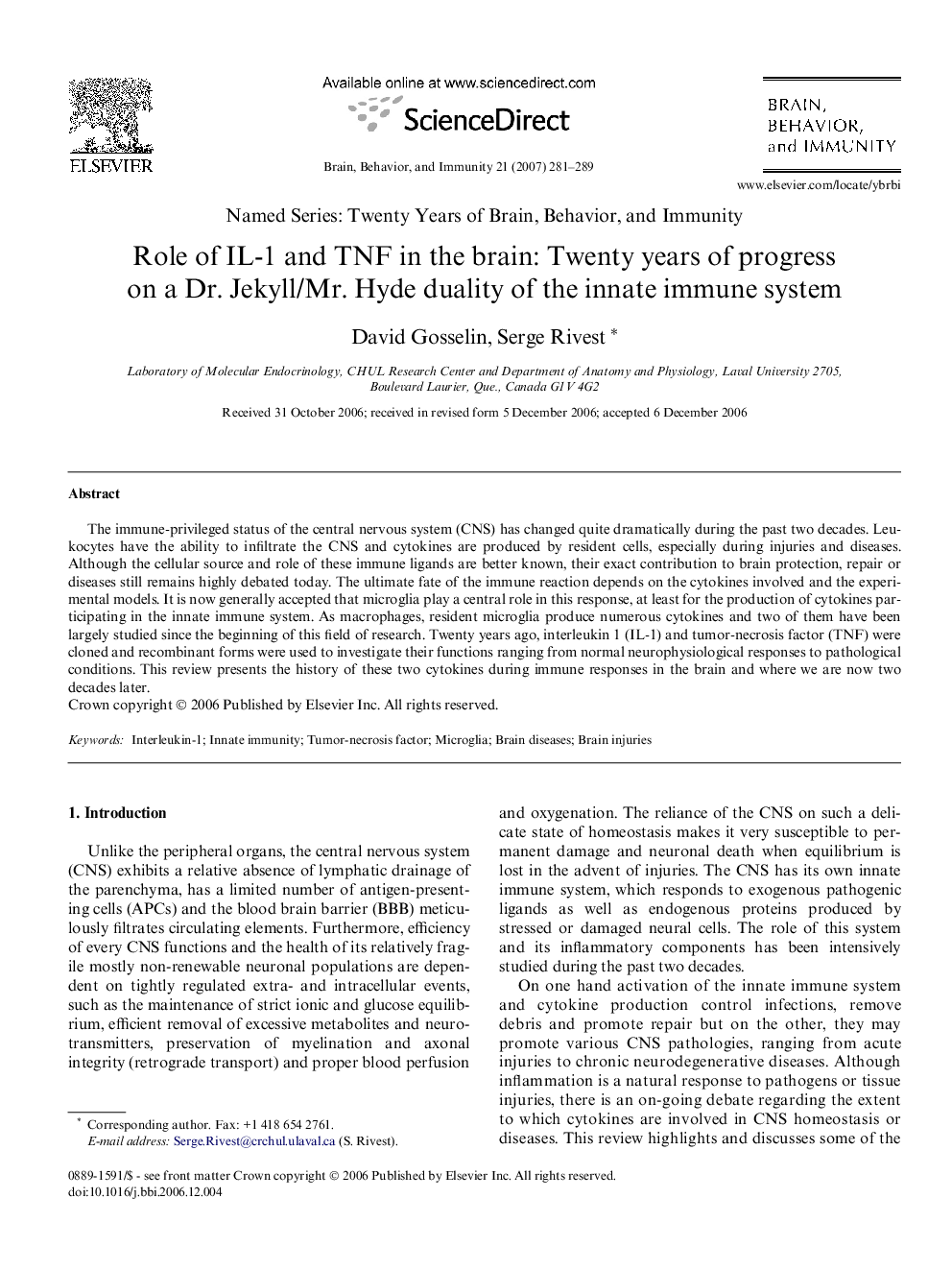| Article ID | Journal | Published Year | Pages | File Type |
|---|---|---|---|---|
| 923465 | Brain, Behavior, and Immunity | 2007 | 9 Pages |
The immune-privileged status of the central nervous system (CNS) has changed quite dramatically during the past two decades. Leukocytes have the ability to infiltrate the CNS and cytokines are produced by resident cells, especially during injuries and diseases. Although the cellular source and role of these immune ligands are better known, their exact contribution to brain protection, repair or diseases still remains highly debated today. The ultimate fate of the immune reaction depends on the cytokines involved and the experimental models. It is now generally accepted that microglia play a central role in this response, at least for the production of cytokines participating in the innate immune system. As macrophages, resident microglia produce numerous cytokines and two of them have been largely studied since the beginning of this field of research. Twenty years ago, interleukin 1 (IL-1) and tumor-necrosis factor (TNF) were cloned and recombinant forms were used to investigate their functions ranging from normal neurophysiological responses to pathological conditions. This review presents the history of these two cytokines during immune responses in the brain and where we are now two decades later.
